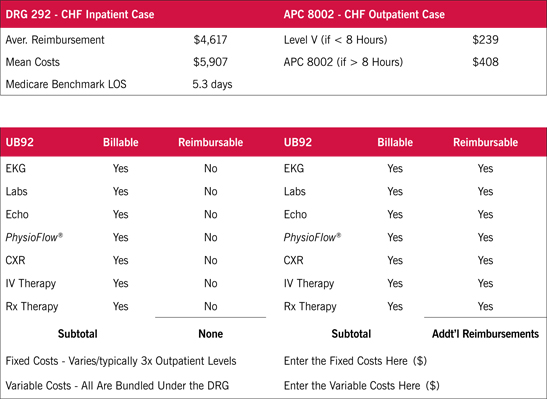

|
|
|
|
|
|
||||||||||||
|
|
 |
|
|
|
Emergency Departments/Observation Units In conjunction with other diagnostic tests, PhysioFlow® monitoring improves diagnosis, triage and treatment of patients in emergency departments, observation units or hospital inpatient settings. PhysioFlow® is particularly helpful in implementing Early-Goal-Directed-Therapy (EGDT). Having a comprehensive cardiovascular profile available to the treating physician allows early intervention that can improve outcome, without exposing patients to the risks associated with invasive hemodynamic procedures. Hospitals are now challenged by CMS and some private payers to prevent hospital acquired conditions (HACs). Insurers are increasingly withholding payments for HACs such as: air embolism, drug errors and infections that are associated with catheter insertions to obtain vascular access. Obtaining and tracking cardiovascular status noninvasively with PhysioFlow® provides the diagnostic benefit of invasive monitoring without patient risk; offering lower disposable costs and higher reimbursements under APC codes. It also fits with reimbursement policies that are increasingly driving care of heart failure (HF) patients to the outpatient setting. The Financial Template (shown below) contrasts the inpatient vs. outpatient CMS's reimbursement situation.
|
|
|
|
|
This site and all contents are © Copyright 2009 - All Rights Reserved by NeuMeDx, Inc., Bristol, PA 19007
| Site Map |
